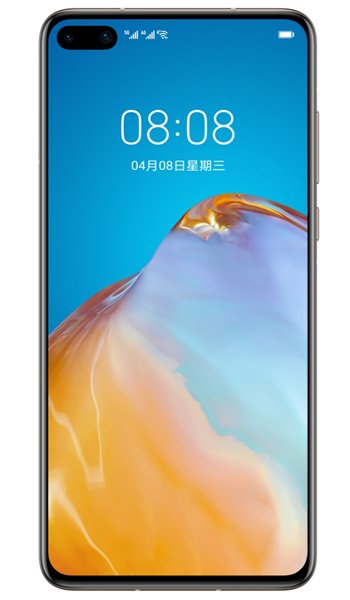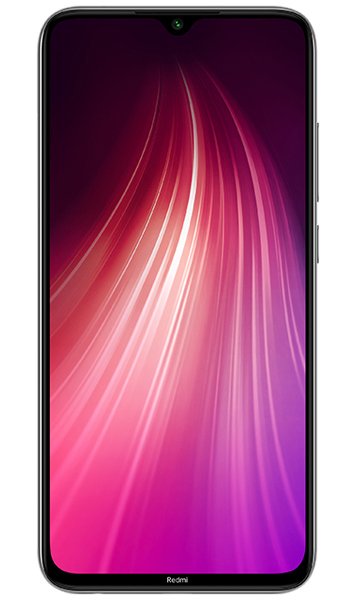Huawei P40 vs Xiaomi Redmi Note 8 Comparison and Differences
Smartphone 1

Huawei P40
Smartphone 2

Xiaomi Redmi Note 8
Smartphone 3
Huawei P40 or Xiaomi Redmi Note 8 Specs Comparison
or
 Common specs
Common specs
| Brand and model | Huawei P40 | Xiaomi Redmi Note 8 | |
| Rating | (+0) | (+0) | |
| Release date | 2020, March 26 | 2019, August | |
| Dimensions (HxWxD) | 148.9 x 71.1 x 8.5 mm | 5.86 x 5.86 x 2.8 in | 158.3 x 75.3 x 8.4 mm | 6.23 x 6.23 x 2.96 in | |
| Weight | 175 g | 6.17 oz | 190 g | 6.7 oz | |
| Body Build | Glass front, glass back, aluminum frame | Front/back glass (Gorilla Glass 5) | |
| Case | buy from Amazon | buy from Amazon | |
| Colors | Silver Frost, Blush Gold, Deep Sea Blue, Ice White, Black | Neptune Blue, Moonlight White, Space Black | |
| Battery | 3800 mAh, Non-removable Li-Po | 4000 mAh, Non-removable Li-Po | |
| Approximate price | 400 EUR | 175 EUR | |
| Check price | from Amazon | from Amazon |
 Screen
Screen
| Technology | OLED | IPS LCD | |
| Touchscreen | capacitive touchscreen | capacitive touchscreen | |
| Display colors | 16M | 16M | |
| Screen size | 6.1" in | 6.3" in | |
| Screen area | 91.3 cm2 | 97.4 cm2 | |
| Screen format | 19.5:9 (height:width) | 19.5:9 (height:width) | |
| Screen to body ratio | 86.3% | 81.7% | |
| Screen resolution | 1080 x 2340 px | 1080 x 2340 px | |
| Screen PPI /points per inch/ | 422 PPI | 409 PPI | |
| Screen protection | Corning Gorilla Glass 6 | Corning Gorilla Glass 5 | |
| Other specs | - DCI-P3 -HDR10 -90Hz |
||
| Screen protector | buy from Amazon | buy from Amazon |
 Camera and Video
Camera and Video
| Rear camera, main | 50 MP, Triple | 48 MP, Quad | |
| Camera specs | -50 MP, f/1.9, 23mm (wide), 1/1.28'', 2.44µm, omnidirectional PDAF, OIS -8 MP, f/2.4, 80mm (telephoto), PDAF, OIS, 3x optical zoom -16 MP, f/2.2, 17mm (ultrawide), AF |
-48 MP, f/1.8, 26mm (wide), 1/2", 0.8µm, PDAF -8 MP, f/2.2, 13mm (ultrawide), 1/4", 1.12µm -2 MP, f/2.4, 1/5", 1.75µm (dedicated macro camera) -2 MP, f/2.4, 1/5", 1.75µm, depth sensor |
|
| Functions | Leica optics, LED flash, panorama, HDR | LED flash, HDR, panorama | |
| Video | 2160p@30/60fps, 1080p@30/60fps, 720p@960fps; gyro-EIS | 2160p@30fps, 1080p@30/60/120fps, gyro-EIS | |
| Front camera, selfie | 32 MP, Dual | 13 MP, Single | |
| Specifications | 32 MP, f/2.0, 26mm (wide), 1/2.8", 0.8µm IR TOF 3D, (biometrics sensor only) |
13 MP, f/2.0, 1.12µm | |
| Functions | HDR | HDR, panorama | |
| Video | 2160p@30/60fps, 1080p@30/60fps | 1080p@30fps |
 Performance
Performance
| Operating system - OS | Android 10.0 (AOSP + HMS); EMUI 10.1 | Android 9.0 (Pie); MIUI 10 | |
| Chipset | - HiSilicon Kirin 990 5G (7 nm+) | - Qualcomm SM6125 Snapdragon 665 (11 nm) | |
| CPU | - Octa-core (2x2.86 GHz Cortex-A76 & 2x2.36 GHz Cortex-A76 & 4x1.95 GHz Cortex-A55) | - Octa-core (4x2.0 GHz Kryo 260 Gold & 4x1.8 GHz Kryo 260 Silver) | |
| GPU | Mali-G76 MP16 | Adreno 610 | |
| External memory | NM (Nano Memory), up to 256GB (uses shared SIM slot) | microSD, up to 256 GB (dedicated slot) | |
| Internal memory | 128GB 6GB RAM, 128GB 8GB RAM, 256GB 8GB RAM | 32GB 3GB RAM, 64GB 4GB RAM, 64GB 6GB RAM, 128GB 4GB RAM, 128GB 6GB RAM |
 Benchmark
Benchmark
| Antutu 10 Total | 227941 | ||
| Antutu 10 CPU | 84510 | ||
| Antutu 10 GPU | 34789 | ||
| Antutu 10 Mem | 51208 | ||
| Antutu 10 UX | 84510 | ||
| Antutu 8 Total | 496357 | 173592 | |
| Antutu 7 Total | |||
| GeekBench 6 Single Core | 932 | 323 | |
| GeekBench 6 Multi Core | 2799 | 1062 | |
| GeekBench 6 OpenCL | 1865 | 293 | |
| GeekBench 6 Vulkan | 4377 | 477 | |
| GeekBench 5 Single Core | 754 | 309 | |
| GeekBench 5 Multi-Core | 2939 | 1328 | |
| GeekBench 4 Single Core | 1499 | ||
| GeekBench 4 Multi-Core | 5543 |
 Communication and Connectivity
Communication and Connectivity
| SIM card | Single SIM (Nano-SIM/eSIM)Hybrid Dual SIM (Nano-SIM, dual stand-by) | Dual SIM (Nano-SIM, dual stand-by) | |
| Network | GSM / HSPA / LTE / 5G | GSM / HSPA / LTE | |
| Bands | -2G - GSM 850 / 900 / 1800 / 1900 - SIM 1 & SIM 2 -3G - HSDPA 800 / 850 / 900 / 1700(AWS) / 1900 / 2100 -4G - LTE -5G - 5G SA/NSA |
-2G - GSM 850 / 900 / 1800 / 1900 - SIM 1 & SIM 2 -3G - HSDPA 850 / 900 / 1700(AWS) / 1900 / 2100 HSDPA 850 / 900 / 2100 -4G - LTE band 1(2100), 2(1900), 3(1800), 4(1700/2100), 5(850), 7(2600), 8(900), 20(800), 38(2600), 40(2300) LTE band 1(2100), 3(1800), 5(850), 8(900), 38(2600), 40(2300), 41(2500) |
|
| Speed | HSPA 42.2/5.76 Mbps, LTE-A, 5G | HSPA 42.2/11.5 Mbps, LTE-A | |
| GPRS | Yes | Yes | |
| Edge | Yes | Yes | |
| Wi-Fi | Wi-Fi 802.11 a/b/g/n/ac/ax, dual-band, Wi-Fi Direct, hotspot | Wi-Fi 802.11 a/b/g/n/ac, dual-band, Wi-Fi Direct, hotspot | |
| GPS | Yes, with dual-band A-GPS, GLONASS, BDS, GALILEO, QZSS, NavIC | Yes, with A-GPS, GLONASS, BDS | |
| NFC | Yes | ||
| USB | 3.1, Type-C 1.0 reversible connector, USB On-The-Go | 2.0, Type-C 1.0 reversible connector, USB On-The-Go | |
| Bluetooth | 5.1, A2DP, LE | 4.2, A2DP, LE | |
| Harmful irradiation |
SAR - 0.26 W/kg (head) 1.00 W/kg (body) SAR EU - 0.19 W/kg (head) 1.09 W/kg (body) |
 Music and Audio
Music and Audio
| Radio | No | FM radio | |
| Headphone jack | No | Yes | |
| Others | - 32-bit/384kHz audio |
 Other features
Other features
| Sensors | - Infrared face recognition, fingerprint (under display, optical), accelerometer, gyro, proximity, compass , Infrared port | - Fingerprint (rear-mounted), accelerometer, gyro, proximity, compass , Infrared port | |
| Other extras |
- Fast charging 22.5W - IP53 dust and splash protection |
- Fast battery charging 18W - Splash protection |
Reviews and Opinions on Huawei P40 and Xiaomi Redmi Note 8
If you had to recommend one of these phones to a friend, which one would it be and why? Share your arguments using the Add Opinion button!

